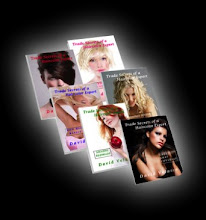
Formulating red hair color can be the most intimidating of all colors. Anyone with a first time client sitting in his/her chair for a single process touchup who is presently wearing a beautiful shade of red and says, “I love my color…just do my re-growth and match what I have” knows what I’m talking about. If your not 100% sure about your haircolor formulation abilities, you will probably be sweating bullets at this point.
Look at the Exposed Contributing Color Pigment Guide below and follow with me as I point out a few things.

You first need to establish what your client’s natural level is. If you are not sure, use the natural level swatches in your color chart book to help. Remember, a level is determined by lightness to darkness minus the tone.
Next, determine what shade of red your client would like to be
(level & tone). Do this by looking at your manufacturer’s swatch book.
Once you have determined her natural color level, find it on the left side of the chart and then go to the right side of the chart to see what the ‘exposed contributing color pigment” will be for that level.
By doing this, you will be able to predict what color will result as you lighten the hair.
If his/her natural color level is 1 or 2, as you can see, about all that you are going to get is a red brown unless the hair is pre-lightened. Levels 3, 4, 5, 6 & 7 will give you good bases for many red haircolor options. I call this the “Red Region”. Levels 8, 9, 10 don’t have any red or orange; so they will be very weak reds but will be fine for very light reds such as strawberry blonde, copper blonde and apricot.
Typically, as long as you’re working on level 6 or darker, and assuming the client has no gray hair, you will probably be able to use the color you have chosen directly on the client per the manufacturer’s instructions.
Most manufacturers state, if you want to go 3 to 4 levels lighter than the client’s natural level, you must use 30 volume developer and 40 volume to go 5 levels lighter. Usually, if you are staying in the same level, lifting only 1 or 2 levels or going darker, 20 volume is sufficient.
Formulating for a client that has either Gray (non-pigmented) or light blonde hair becomes a little more challenging. These clients, in many cases, don’t have enough warmth in their hair to give the depth in color tonality that needed in order to achieve a good red color. What you need to do is mix the desired red shade with a brown base color (natural base or gold base) to make up for the lack of brown in the hair.
I’ll be referring a lot to what I call brown base colors. As a rule of thumb, if you want to create a cool red (auburn, plum, burgundy, violet base reds), I recommend using a natural or neutral base color for your brown base color.
If you want to create a warm base color (red-golds, copper reds, strawberry blonde), I recommend using a gold base color.
Use the gold or natural base colors in the same level as the desired shade with which you will be working.
For example,
5rv + 5n
+ 5n  ==Desired Shade
==Desired Shade
7ro  +7g
+7g  ==Desired Shade
==Desired Shade
This lesson is an excerpt from my best selling book "Amazing Redheads" in the “Trade Secrets of a Haircolor Expert” Home Study Course. If you would like more information…Click Here: http://www.haircolortradesecrets.com/redheads.html









No comments:
Post a Comment